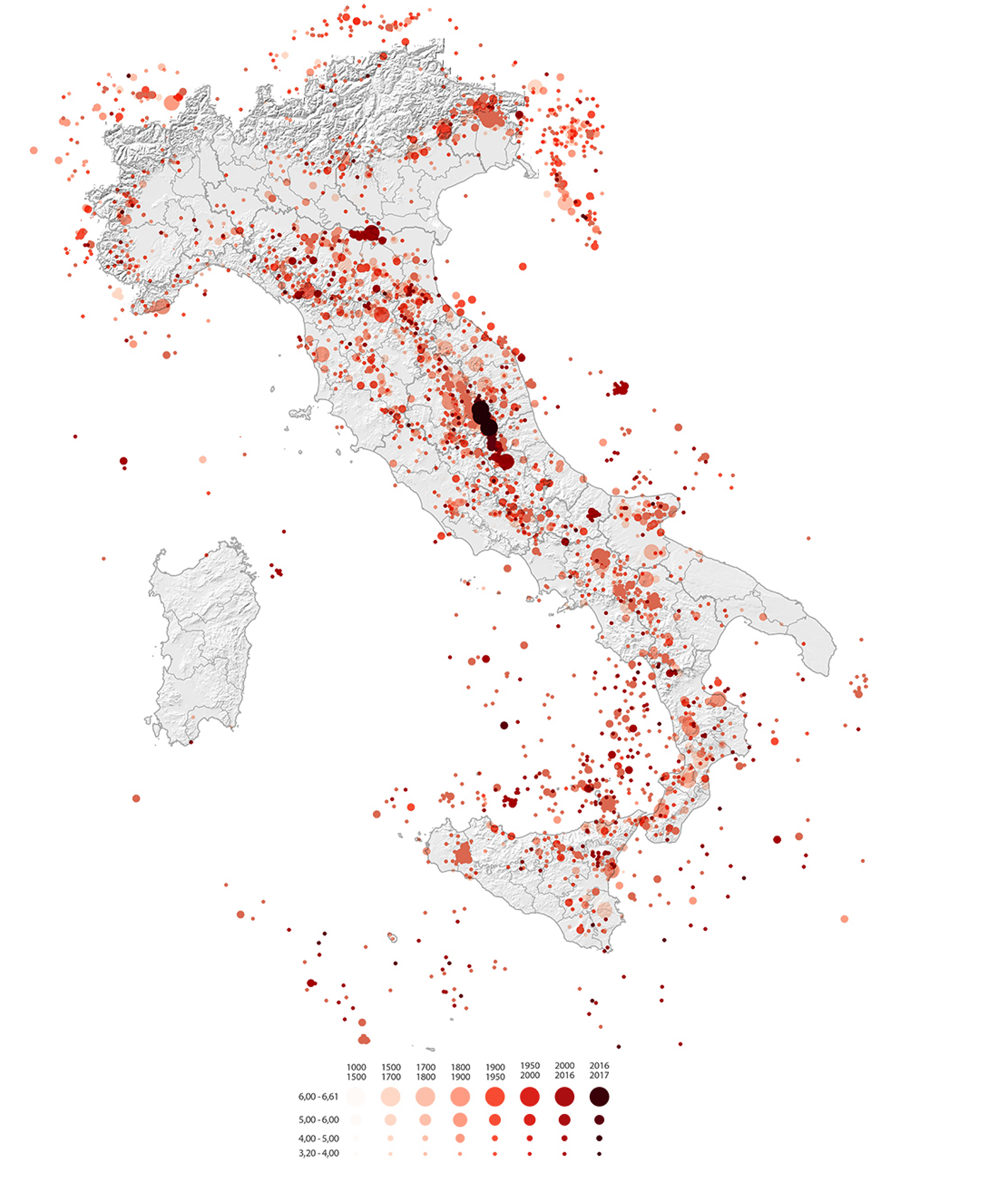Permanent temporariness in the post-earthquake
The ordinariness of the provisional condition between emergency and reconstruction in Central Italy
Year
2019 - 2023
Author
Supervisors
Matteo Robiglio, Andrea Lingua, Massimo Crotti
Departments
DAD
Tags
#post-earthquake #reconstruction #temporary architecture #temporality and permanence design tools #Mapping GIS
Type
PhD research

Abstract
Affected by chronic natural disasters, Italy is a fragile territory by nature. In the last 50 years, eight violent earthquakes hit it, three in the Central Apennines’ diffuse areas in the previous twenty years alone.
The rules, the processes, and the solutions for emergency management in Italy, and the world, have moved architectural design away from standardized solutions and lack attention to the territorial complexities.
All are combined with the slowness of reconstruction processes, often completed within 20 to 30 years of the event. Since the 2016 seismic events in Central Italy and looking at the spatial impact of temporary buildings, this research reflects the relationships between emergency and permanent urban settlements and their effects/transformations in that long time “in-between” on urban and regional reconstruction.
What role does the ‘temporary’ emergency project take on in Italian post-seismic territories, and what geographies does it produce? How is it possible to re-design possible futures for this permanent provisional legacy?
In the absence of consolidated cartographic studies on the issue, an overall, systemic, and national scale phenomenon perspective, the thesis aims to reflect on temporary management. Geospatial analyses support the reflections, and the mapping methods define and decode those “theoretically” provisional processes (from the geographical to the settlement scale). The perspective is overcoming emergency operations, from the concept of protection to the idea of incorporation and coexistence within design practices of long-term risks.
The research proposes the construction of a multi-scale and multi-temporal geographic database supported by a geographic information system (GIS), which allows the interaction between geomatic tools to be explored as urban design tools.
Through a historical diachrony and a critical comparison of Italian and international cases, the research aims to investigate the settlement transformation resulting from temporary solutions to the actions and processes of continuous displacement, re-foundation, and reconstruction.
One of the results is the design of a harmonised geospatial (database) Atlas of “temporary” solutions, giving back an empirical and accurate overview of the current phenomenon in Central Italy, measurement, using stratification of heterogeneous sources and information, often not updated.
From there, focusing on specific territorial case studies in the inner area of Central Italy, the thesis intends to identify potential transformative scenarios for the two half cities, the existing, destroyed one and the legacy of the new, temporary one.
How can they coexist in future possible reconstruction processes in regions and communities affected by endemic emergencies – natural, economic and anthropic – which are increasingly ordinary rather than extraordinary?
